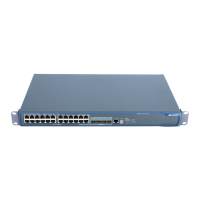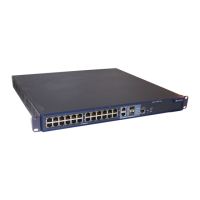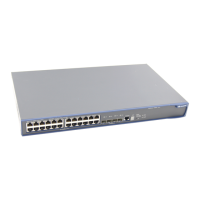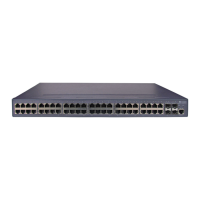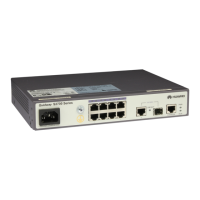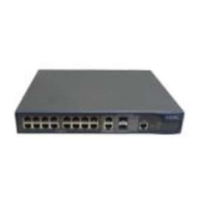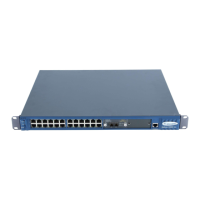
Do you have a question about the Huawei Quidway S1700 Series and is the answer not in the manual?
Guides users on how to access the switch's web interface for configuration.
Explains the layout and elements of the web interface for efficient operation.
Describes the automatic logout feature due to inactivity on the web interface.
Details the process of saving configuration changes made through the web interface.
Provides instructions on how to securely exit the web interface session.
Describes the visual representation of switch ports and their status on the interface.
Shows how to view essential details like Product ID, MAC, and software version.
Details how to monitor the switch's current CPU and Memory usage.
Covers configuring basic system details like name, location, and contact information.
Explains how to configure IP addresses for network management access.
Covers upgrading firmware, managing startup files, and system file operations.
Guides on manually setting the switch's internal clock and date.
Shows how to monitor the switch's CPU usage over specified time intervals.
Details how to view the switch's memory utilization parameters.
Explains the procedure for restarting or resetting the switch to its default state.
Provides information on how to display RFID data related to the switch hardware.
Covers configuring port connections, mirroring, and cable diagnostics.
Explains how to configure static and dynamic port trunks for increased bandwidth.
Details how to view transceiver information for the selected port.
Guides on enabling power saving features on switch ports.
Covers creating, modifying, and managing static VLAN configurations.
Explains how to add ports or trunks as members to VLANs.
Guides on modifying existing VLAN properties like name and members.
Details how to edit or view VLAN membership by VLAN index.
Covers editing or viewing VLAN membership on a per-interface basis.
Explains how to manage VLAN membership for a range of interfaces.
Guides on viewing and removing static VLAN configurations.
Covers configuring static MAC address entries for specific interfaces.
Explains how to manage dynamic MAC address learning and aging.
Covers setting global Spanning Tree Protocol parameters for the entire switch.
Details how to display the current global STP configuration and status.
Guides on configuring STP attributes for individual switch ports and trunks.
Shows how to view the STP status and configuration for specific interfaces.
Explains how to set traffic rate limits on egress ports to control bandwidth usage.
Guides on setting thresholds to mitigate broadcast, multicast, or unicast storms.
Covers setting priority queues and mapping traffic for quality of service.
Guides on isolating VoIP traffic into a dedicated VLAN for better quality.
Covers authentication, authorization, and accounting framework for access control.
Covers creating, modifying, and deleting user accounts with access levels.
Explains controlling network access by authenticating device MAC addresses.
Guides on creating lists of IP addresses authorized for switch management access.
Details enabling or disabling port isolation to restrict communication between ports.
Covers implementing IEEE 802.1X port-based access control for network security.
Covers controlling error message logging to memory or remote servers.
Covers LLDP for discovering information about neighboring network devices.
Guides on using the PING utility to test network connectivity to other devices.
Explains ARP's role in mapping IP addresses to physical MAC addresses.
Covers configuring IGMP snooping to efficiently forward multicast traffic.

